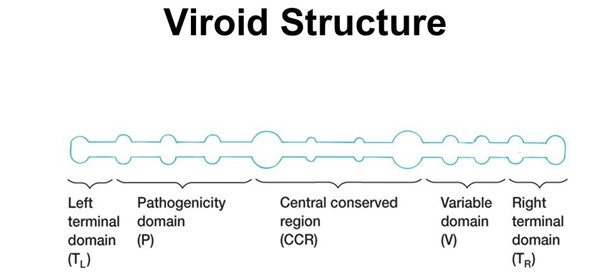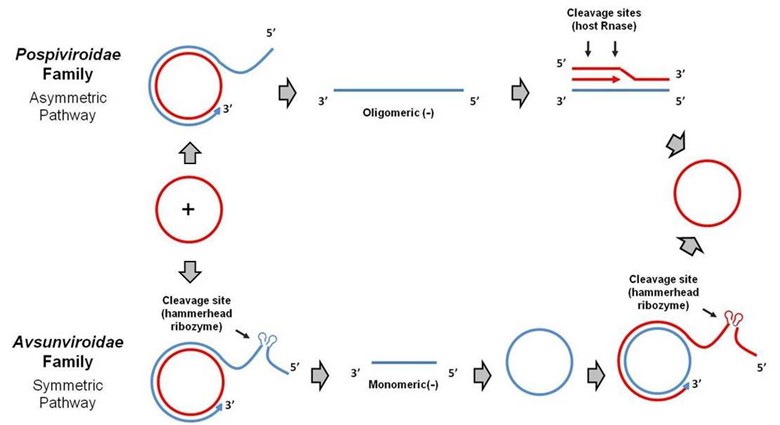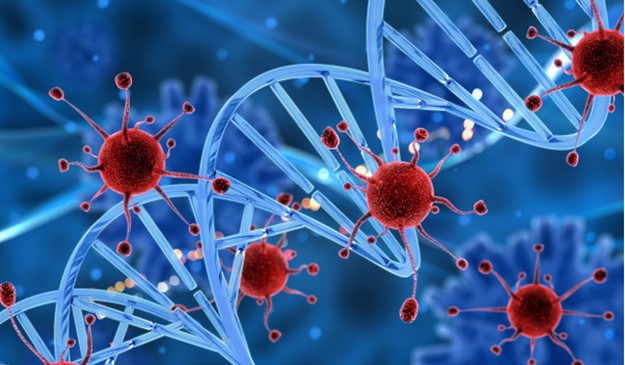How small can the viral genomes possibly get? The answer to this question is presented by the subviral agents known as viroids. Viroids are the smallest pathogen known to mankind. These are circular, naked, single stranded RNA molecules that do not encode any protein but still are able to replicate independently when introduced within a compatible host. Discovered in 1971, the prototype being potato spindle tuber viroid, researchers have come up with 29 other viroids that range in a length of 120 to 475 nucleotides. Mostly plant-infecting molecules, the only human disease that viroids are capable of causing is Hepatitis D. Viroids are mostly found behind the economically important diseases of crop plants. Apple scar skin viroid (that causes an infection resulting in visually unappealing apples) and coconut cadang-cadang viroid (that causes a lethal infection of coconut palms) are two examples of economically important viroids.

All of the 30 known viroids have been broadly classified in two families. Members from the Pospiviroidae, which are named for potato spindle tuber viroid, consist of a rod-like secondary structure along with small regions of single strands which is a conserved central region. It replicates in the nucleus. The Avsunviroidae, that are named for avocado sunblotch viroid, consists of both branched and rod-like regions. These replicate in the chloroplasts and lack a central conserved region. Unlike Pospiviroidae, these RNA particles are functional ribozymes, an activity that is essential for proper replication.
There exists no such evidence that viroids are capable of encoding mRNAs or proteins. In contrast to viruses, which basically are the parasites of host translation machinery, viroids act as parasites of the transcription proteins of the cell: these molecules rely upon cellular RNA polymerase for their replication. This kind of polymerase usually recognizes the templates of DNA; however, they may also copy viroid RNAs.
The plants in which the infection of Pospiviroidae takes place, viroid RNA is imported within the nucleus and is further replicated by DNA-dependent RNA polymerase II of the plant. The viroid is replicated via a rolling circle system that produces concatemeric, complementary linear RNA. These are replicated again for producing concatemeric, linear molecules, which are then cleaved with the help of the host enzyme RNAse III. Their ends are then ligated to form circles by a host enzyme. On the other hand, in plants where the infection takes place with members of the Avsunviroidae, the RNA molecule of viroid is imported within the chloroplast and the production of complementary concatemeric RNAs take place via DNA-dependent RNA polymerase of the chloroplast. These molecules are further cleaved by a ribozyme which is an enzyme encoded in the viroid RNA itself.

Following successful replication, the viroid progenies exit the chloroplast or nucleus and spread to the adjacent cells through plasmodesmata. These molecules are capable of travelling systemically via phloem for infecting other healthy cells. Viroids may even enter the ovule and pollen from where their transmission to seeds take place. The new plant germinated from this seed comes out as infected. Contaminated insects and farm machinery might transmit viroids to plants.
The inception of viroids remains an enigma; however, it has been suggested that they are relics from the “RNA WORLD”, which is thought to have been populated exclusively by non-coding RNA molecules that could catalyze their own synthesis. Viroids exhibit certain properties that make them probable candidates for survivors from the RNA world: a small and compact genome size (for avoiding the catastrophe caused due to replication which is error-prone), a high G+C content (for heightened thermodynamic stability), circular genomes (to keep away from the requirement for systems to prevent loss of information at the linear genome’s ends), absence of protein content, and the presence of a ribozyme, pointing towards a fingerprint of the RNA world. Currently, viroids are unable to replicate independently, most probably by losing the function at the time when they became parasites of host plants. What initially started as a quest for virus-like agents that can cause infection in plants might possibly have leads to new insights into the evolution of life.

